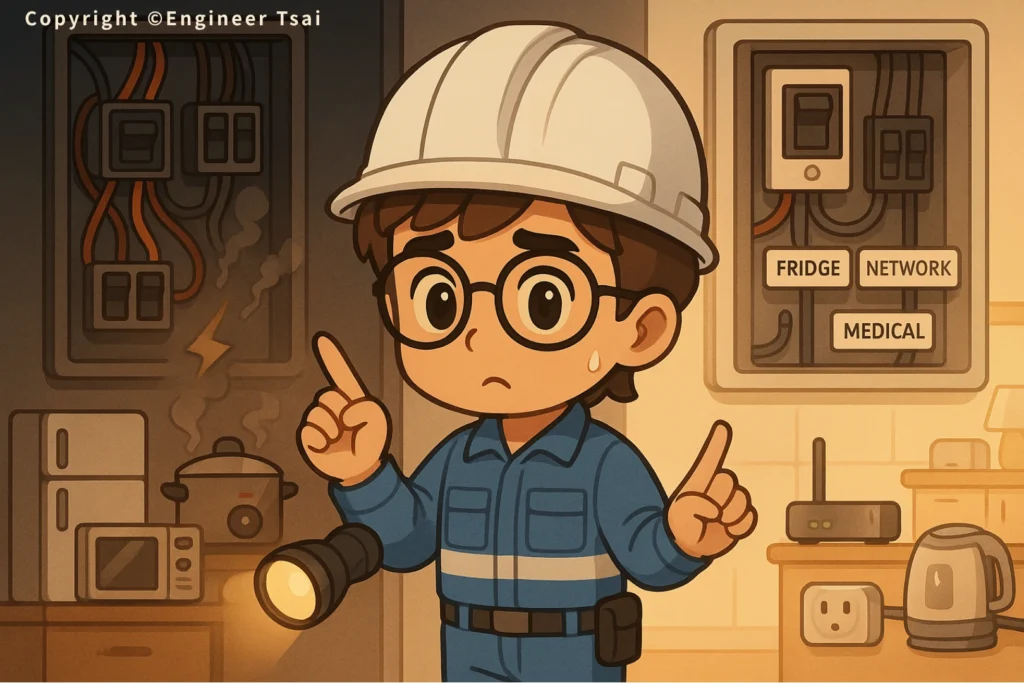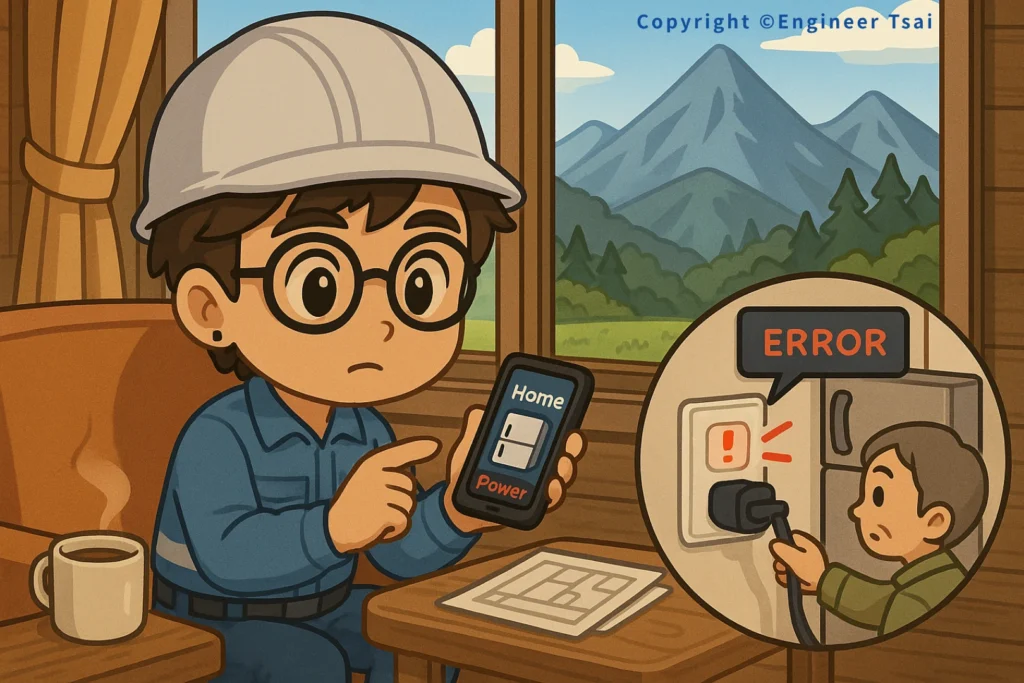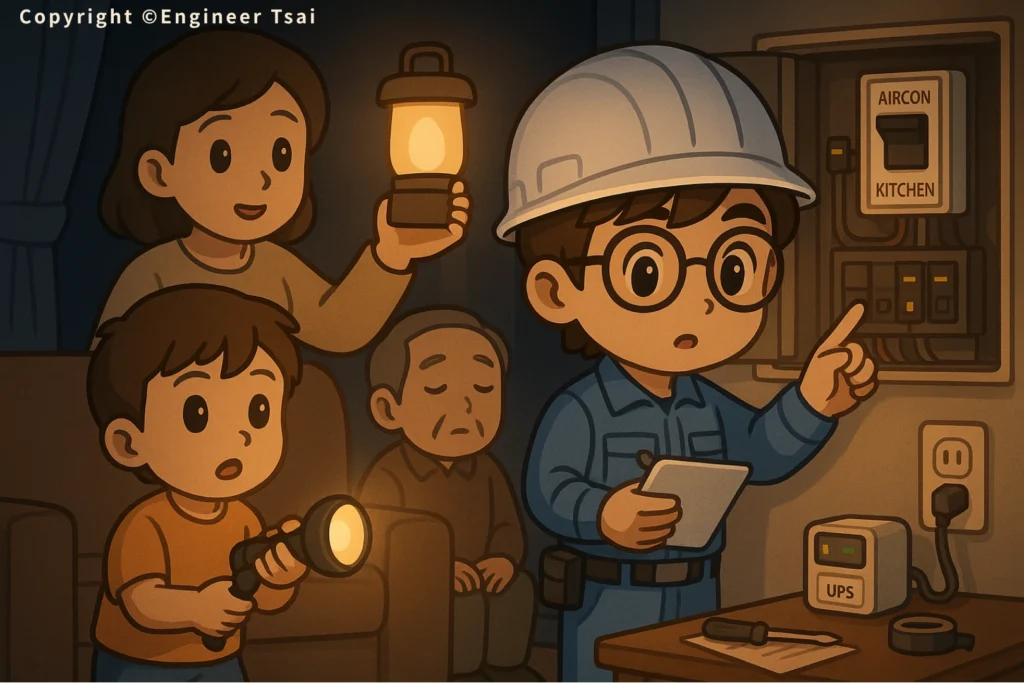Ever notice how power outages always seem to hit at the worst possible time?
It’s not just about plugging in too many gadgets, but Home Electrical Setup.
More often, it’s because your home’s electrical system isn’t set up for real-life chaos, maybe the panel hasn’t been updated since the ‘90s, or nobody knows which circuit goes to what.
When you skip proper planning, one flip and the whole house is suddenly dark.
Some folks’ first instinct is to panic and call an electrician about Home Electrical Setup.
But here’s the secret: Families who ride out blackouts like pros?
They’ve already done the work, marked their breaker panels, set up backup power, and practiced what to do.
You don’t have to be an expert to keep your house running. You just need a little planning and a few new habits.
This isn’t a “how to rewire your house” post.
This is about the little changes, from organizing your electrical panel to choosing backup systems and running family drills, that make your home safe, stress-free, and blackout-ready.
Because let’s be honest, no one likes scrambling in the dark.

1. Smart Circuit Planning: Keeping the Lights (and Fridge) On
Take a look at your breaker panel.
Is it a mess of unlabeled switches? Most homes are.
And here’s what that means:
- The fridge and the microwave are on the same circuit, so whenever you heat something up, the fridge could cut out—bye-bye groceries.
- Your internet and TV share a breaker, so when the power blips, even your security cams can go down.
- Maybe someone at home relies on a medical device, and you have no idea which switch controls it. That’s a recipe for trouble.
What to do:
- Make sure critical appliances—fridge, Wi-Fi/router, medical gear—each have their own dedicated circuit.
- Use a label maker or tape. Mark every breaker. Make it so obvious even your kid could reset the right switch.
- If you’re unsure, bring in a licensed electrician to run independent lines for the most important stuff. Don’t just add more power strips.
2. Prevention Beats Panic: Your Regular Checkup List
A lot of people only notice a problem after the power’s already out. “Wait, that outlet’s been loose for months!”
Truth is, prevention is way easier than repairs after the fact.
Check these regularly:
- Any rust or sticking switches in your breaker panel?
- Outlets or extension cords warm, yellowed, or loose?
- Every six months, review your high-power appliances (microwave, AC, electric kettle). If a device always trips a breaker, call a pro.
Upgrade Tips:
- Older homes: Install modern breakers with arc-fault and ground-fault protection.
- For critical devices (especially fridges), consider a small UPS (uninterruptible power supply)—just a couple hours of juice could save your groceries or keep medical equipment running.
3. Smarter Homes, Smarter Power
Today’s tech makes staying in control easier than ever:
- Smart outlets and power monitors: See real-time usage, and get alerts if something’s off.
- Remote apps: Get notified if your fridge, router, or sump pump loses power—perfect if you’re out of town.
- Voice controls and scheduling: Set up routines so your essential gear turns back on automatically after a blackout. Even kids and seniors can use them.
True story:
Last summer, my buddy was away when a thunderstorm cut power to his fridge. Thanks to his smart outlet, he got an alert and asked a neighbor to check—saved a fridge full of food!

4. Family Blackout Drills: Practice Beats Panic
A blackout drill isn’t just for kids to play flashlight tag.
The families who handle emergencies best are the ones who’ve done a real run-through.
Action steps:
- Pick a night and cut the power for 10 minutes.
- Assign roles: Who grabs flashlights? Who checks on pets or kids? Who goes to the breaker panel?
- Debrief after: What was missing? Was everything easy to find? Did everyone know what to do?
Do it a few times a year. Next time there’s a real outage, your family will be cool under pressure.
5. Common Mistakes And How to Avoid Them
- Overloading extension cords: Plug too much into one strip, and you’ll trip the whole house.
- No labels on the breaker panel: Someone always flips the wrong one in a crisis.
- UPS left unused for years: Batteries die, and you only find out when you really need it.
- Medical equipment sharing circuits with heavy-duty gear: Risky and not worth it.
Bottom line:
Power outages aren’t the enemy. Being unprepared is.
Yearly Safety & Upgrade Checklist
- Breaker panel labeled; essential gear on dedicated circuits
- Panel, wiring, and outlets checked or updated as needed
- UPS and power banks tested and charged
- Smart plugs or power monitors set up for key appliances
- Family has practiced a blackout drill together

Final Takeaway
Don’t wait for your next “total darkness” moment.
A little planning, like a new label, a backup battery, or a quick family drill, can turn chaos into calm, just by Home Electrical Setup.
Electricity isn’t just about keeping the lights on; it’s about keeping your family safe, comfortable, and confident, no matter what the weather (or power grid) throws your way.
📌 Recommended Reads:
🔹 Homeowner’s Guide: What to Check First When You Lose Power
Learn what to check first when the lights go out.
🔹 Beginner’s Guide: Five Electrical Tools That Make Home Maintenance Easy
Simple tools, big peace of mind for small fixes.
🔹 Why Is Electrical Grounding Important? Safety Tips & Best Practices
The basics of why and how to ground your home electrical system.
How do you handle power outages? Any prep tips or wild blackout stories?
Share your thoughts in the comments—let’s keep our families safer together!


